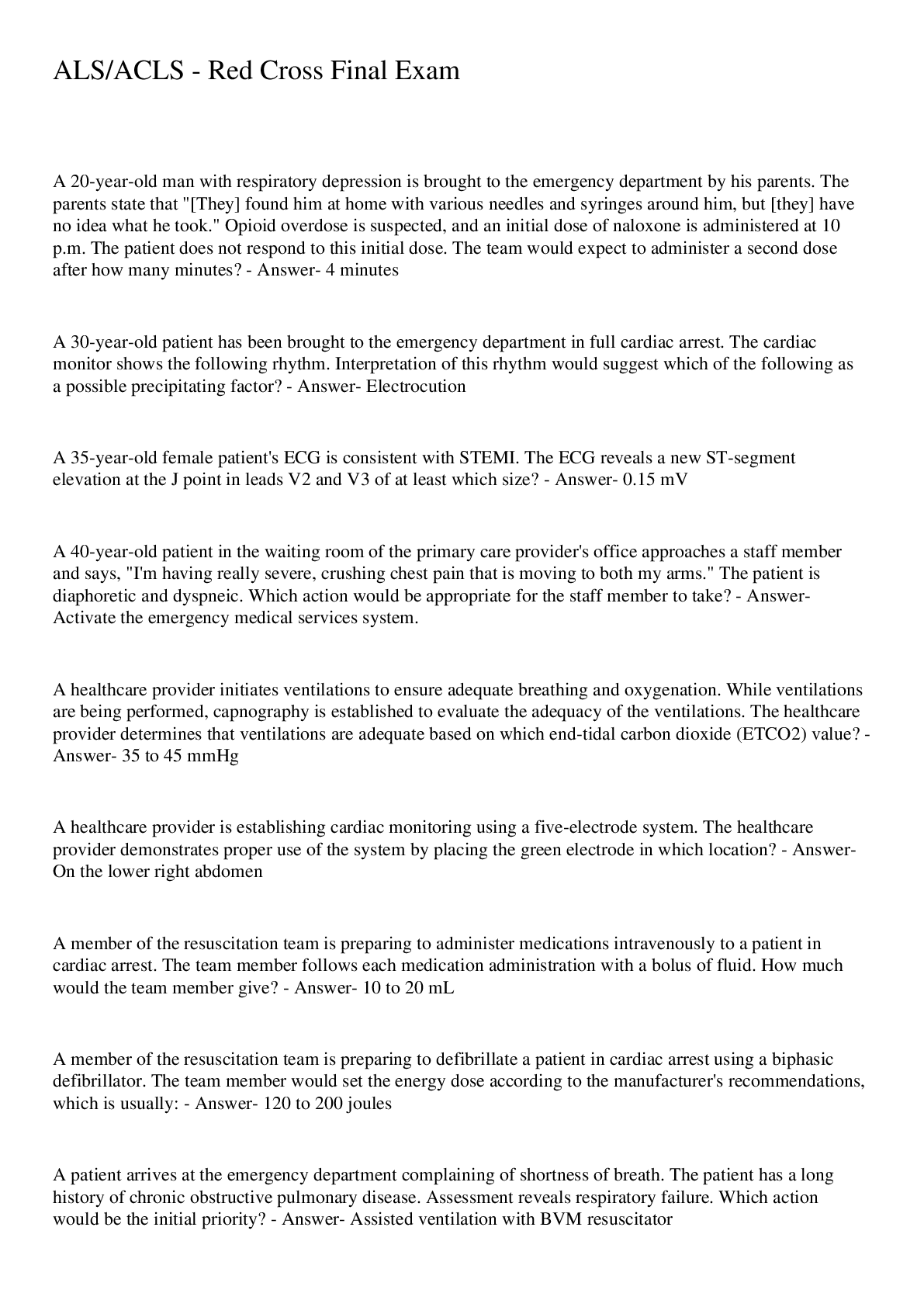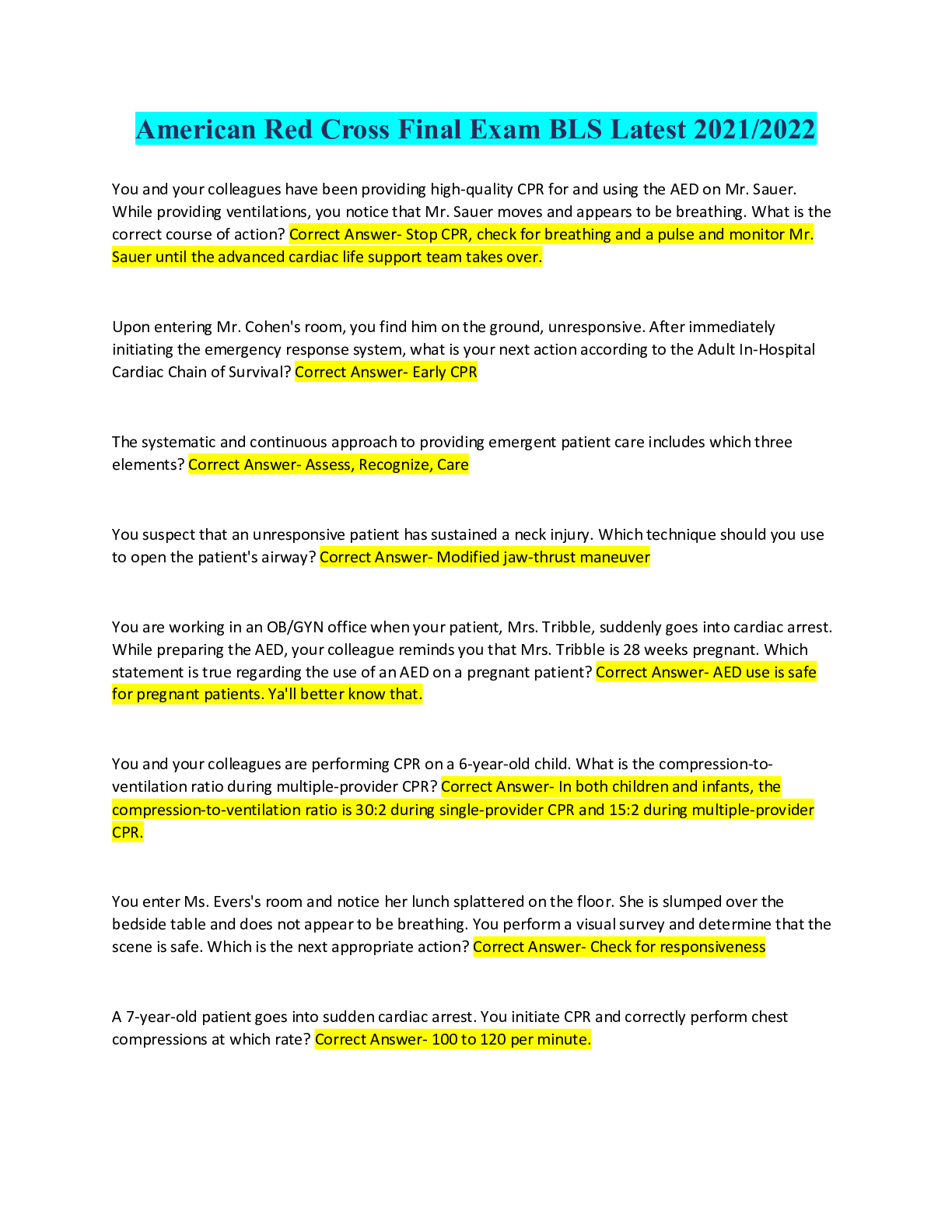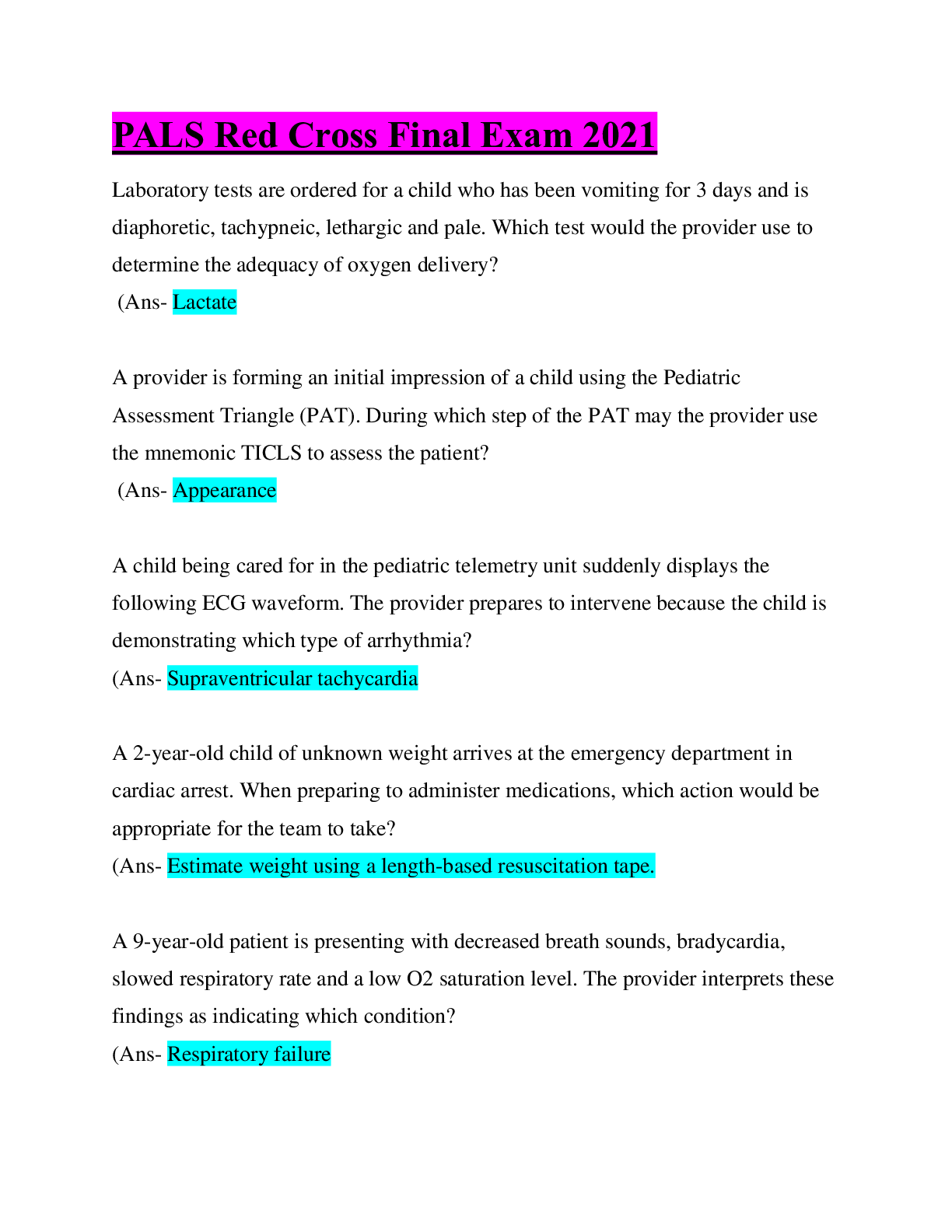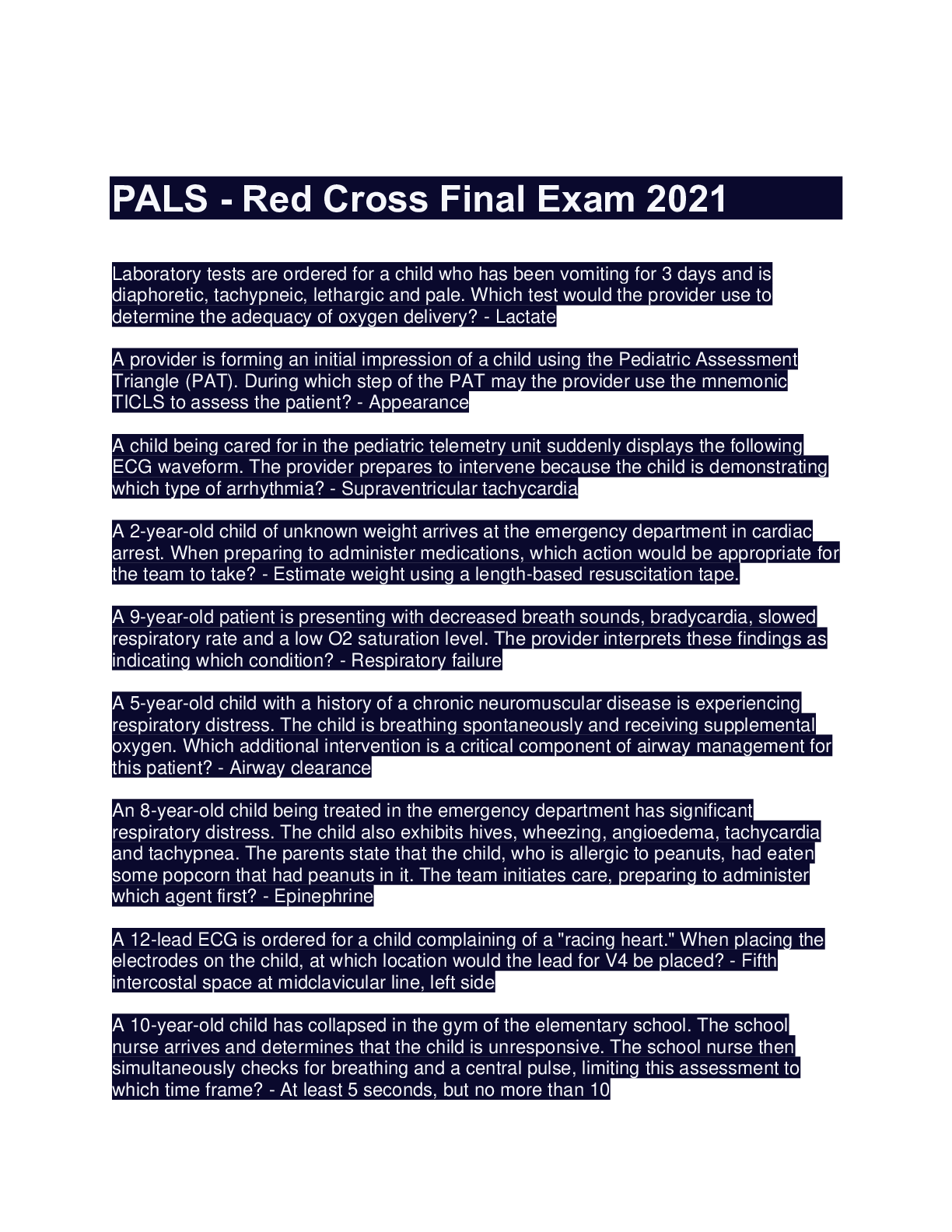*NURSING > EXAM > PALS - Red Cross Final Exam 2022, Reliable Study Materials & Testing Engine for PALS - Red Cross (an (All)
PALS - Red Cross Final Exam 2022, Reliable Study Materials & Testing Engine for PALS - Red Cross (answered)
Document Content and Description Below
PALS - Red Cross Final Exam 2022 Laboratory tests are ordered for a child who has been vomiting for 3 days and is diaphoretic, tachypneic, lethargic and pale. Which test would the provider use to d... etermine the adequacy of oxygen delivery? A provider is forming an initial impression of a child using the Pediatric Assessment Triangle (PAT). During which step of the PAT may the provider use the mnemonic TICLS to assess the patient? A child being cared for in the pediatric telemetry unit suddenly displays the following ECG waveform. The provider prepares to intervene because the child is demonstrating which type of arrhythmia? A 2-year-old child of unknown weight arrives at the emergency department in cardiac arrest. When preparing to administer medications, which action would be appropriate for the team to take? A 9-year-old patient is presenting with decreased breath sounds, bradycardia, slowed respiratory rate and a low O2 saturation level. The provider interprets these findings as indicating which condition? A 5-year-old child with a history of a chronic neuromuscular disease is experiencing respiratory distress. The child is breathing spontaneously and receiving supplemental oxygen. Which additional intervention is a critical component of airway management for this patient? An 8-year-old child being treated in the emergency department has significant respiratory distress. The child also exhibits hives, wheezing, angioedema, tachycardia and tachypnea. The parents state that the child, who is allergic to peanuts, had eaten some popcorn that had peanuts in it. The team initiates care, preparing to administer which agent first? A 12-lead ECG is ordered for a child complaining of a "racing heart." When placing the electrodes on the child, at which location would the lead for V4 be placed? A 10-year-old child has collapsed in the gym of the elementary school. The school nurse arrives and determines that the child is unresponsive. The school nurse then simultaneously checks for breathing and a central pulse, limiting this assessment to which time frame? A 30-month old child has been diagnosed with moderate croup. Which medication(s) would the provider administer? A child is experiencing shock. The emergency response team prepares for imminent cardiac arrest when assessment reveals which finding(s)? A PALS resuscitation team is preparing to defibrillate a child experiencing cardiac arrest. For which rhythm(s) would this action be appropriate? A child is experiencing stable supraventricular tachycardia (SVT) and is to receive treatment. Which initial treatment would the provider administer? A 4-year-old child is brought to the emergency department by the parents. Assessment reveals that the child is gasping and the pulse rate is 65 beats per minute. Which action would the provider initiate first? The PALS resuscitation team notes the following ECG waveform and the child does not have a pulse. The team prepares to intervene to address which arrhythmia? A child who is stable and exhibiting a wide-complex tachycardia is to receive adenosine. The provider would be alert for which result after administering this medication? The PALS team leader is conducting a debriefing session with the team. Which topic(s) would the team leader most likely address during the session? A 12-year-old child being evaluated in the pediatric intensive care unit displays the following ECG waveform. The team interprets this as which arrhythmia? A provider is assessing a child with suspected shock. Which statement correctly describes hypotension and shock? An 11-year-old soccer player is brought to the emergency department. After a quick assessment, the team realizes this patient is experiencing a severe asthma exacerbation. Which medication would the team administer first? An 11-year-old child develops unstable wide complex tachycardia. Assessment reveals signs of significant hemodynamic compromise, but the child has a pulse. The PALS team would prepare the child for which intervention? A 15-year-old patient is being evaluated during a follow-up visit after being diagnosed with Lyme disease 2 months ago. A rhythm strip is obtained as shown below. The provider interprets this rhythm as indicating which arrhythmia? A 4-year-old patient presents with tachycardia, tachypnea, cold extremities and weak pulses. Assessment also reveals an enlarged liver and neck vein distension. The provider interprets these assessment findings as suggesting which type of shock? - A child in cardiac arrest experiences return of spontaneous circulation but is exhibiting signs of post-cardiac arrest syndrome (PCAS). The PALS resuscitation team determines that the child is experiencing a systemic response to ischemia/reperfusion. The team bases this determination on which finding(s)? Assessment of a 3-month-old infant admitted with respiratory distress reveals fever, grunting and a wet, "junky" cough. The infant's parents said the child had a recent respiratory infection with a fever. A rapid respiratory syncytial virus (RSV) test is positive. Which condition would the provider most likely suspect as the cause? Following a cardiac arrest, a child is experiencing post-cardiac arrest hemodynamic instability. The PALS resuscitation team would administer which element to restore intravascular volume and optimize preload? A child in the pediatric intensive care unit displays the following ECG waveform and does not have a palpable central pulse. The resuscitation team interprets this as which arrhythmia? Which action would the PALS resuscitation team initiate to minimize increased intracranial pressure after cardiac arrest? A 2-year-old child is brought to the pediatric urgent care clinic by the parent who says that the child has had a barking cough for two days. During the rapid assessment of the child, the provider hears audible inspiratory stridor. Which diagnosis would the provider most likely suspect? - Croup An advanced airway was placed in a 5-year-old child. Which action(s) would be most appropriate for the team to take to confirm correct placement? A child experiencing unstable bradycardia is receiving CPR. Despite efforts with CPR, the child's status remains unchanged. Which medication would the emergency response team expect to administer next? - The PALS team is providing post-cardiac arrest care to an 8-year-old child in the pediatric intensive care unit. Which intervention would the team implement to achieve the primary goal of post-cardiac arrest care? The PALS resuscitation team is providing care to an intubated child in cardiac arrest. Which result best determines the adequacy of the team's chest compressions? A child requires cardiac monitoring. A three-electrode system is being used. At which location would the provider place the red electrode? A 12-year-old is being treated in the urgent care clinic. The mother reports that the child came home from school yesterday with a high fever, vomiting and multiple episodes of watery diarrhea. The healthcare provider obtains a rhythm strip and notes the following waveform. The provider interprets this as which type of arrhythmia? A 7-year-old child collapses on the playground at school. The school nurse is called to the scene and determines that the child is unresponsive and is not breathing and has no pulse. The nurse initiates CPR. At what rate and depth would the nurse deliver compressions to this child? The emergency response team is providing care to a preschooler who is experiencing shock. Which therapeutic goal, common to all types of shock, does the team work to achieve? A 2-year-old child arrives at the emergency department with the parents. The child is unresponsive, is not breathing and has no pulse. Two emergency department providers begin high-quality CPR. Which action(s) by the providers demonstrates high-quality CPR? A 6-year-old patient is brought to the emergency department after a bicycle accident. Assessment reveals tracheal deviation to the left side, chest pain on inspiration and decreased breath sounds on the right side. The provider suspects obstructive shock caused by what condition? An unresponsive 7-year-old child with no pulse is brought to the pediatric urgent care center by his parents and CPR is initiated. The cardiac monitor reveals ventricular fibrillation. Which action would the PALS team take first? Primary assessment of a 10-year-old child reveals septic shock. As part of the secondary assessment, laboratory testing is completed to evaluate the child's status. Which finding(s) would support the diagnosis? A child in the pediatric step-down unit is exhibiting signs of respiratory distress. When assessing this child, which finding would be considered a late sign for this condition? - Assessment of a 7-year-old patient with septic shock reveals capillary refill of 3 seconds, diminished pulse and narrow pulse pressure. The emergency response team interprets these findings as indicating which type of septic shock? A 4-month old infant is brought to the emergency department in cardiac arrest. Which condition would the team identify as the most common cause of cardiac arrest in an infant of this age? While formulating initial impressions using the Pediatric Assessment Triangle, the provider assesses the child's circulation. Which information would be important to consider? A 6-year-old child is brought to the emergency department. The child has been experiencing extremely watery stools over the past several days. After completing the assessment, the healthcare provider suspects that the child may be experiencing shock. Which type of shock would the provider most likely suspect? A provider is caring for a 4-year-old child in the urgent care clinic. Primary assessment reveals difficulty breathing and an oxygen saturation of 91%. The provider administers oxygen by nasal cannula with the goal of improving the child's oxygen saturation to at least what percentage? A 4-year-old child suddenly collapses in the playroom of the facility. A healthcare provider observes the event and hurries over to assess the child. The healthcare provider completes which assessment first? A 9-year-old child is brought to the emergency department because the child suddenly collapsed at school. The child's ECG reveals the following waveform, and primary assessment findings indicate that the child is hemodynamically unstable. Which primary assessment findings indicate this? A healthcare provider is performing a primary assessment of a child in respiratory distress. The provider documents increased work of breathing when which findings are observed? [Show More]
Last updated: 1 year ago
Preview 1 out of 6 pages
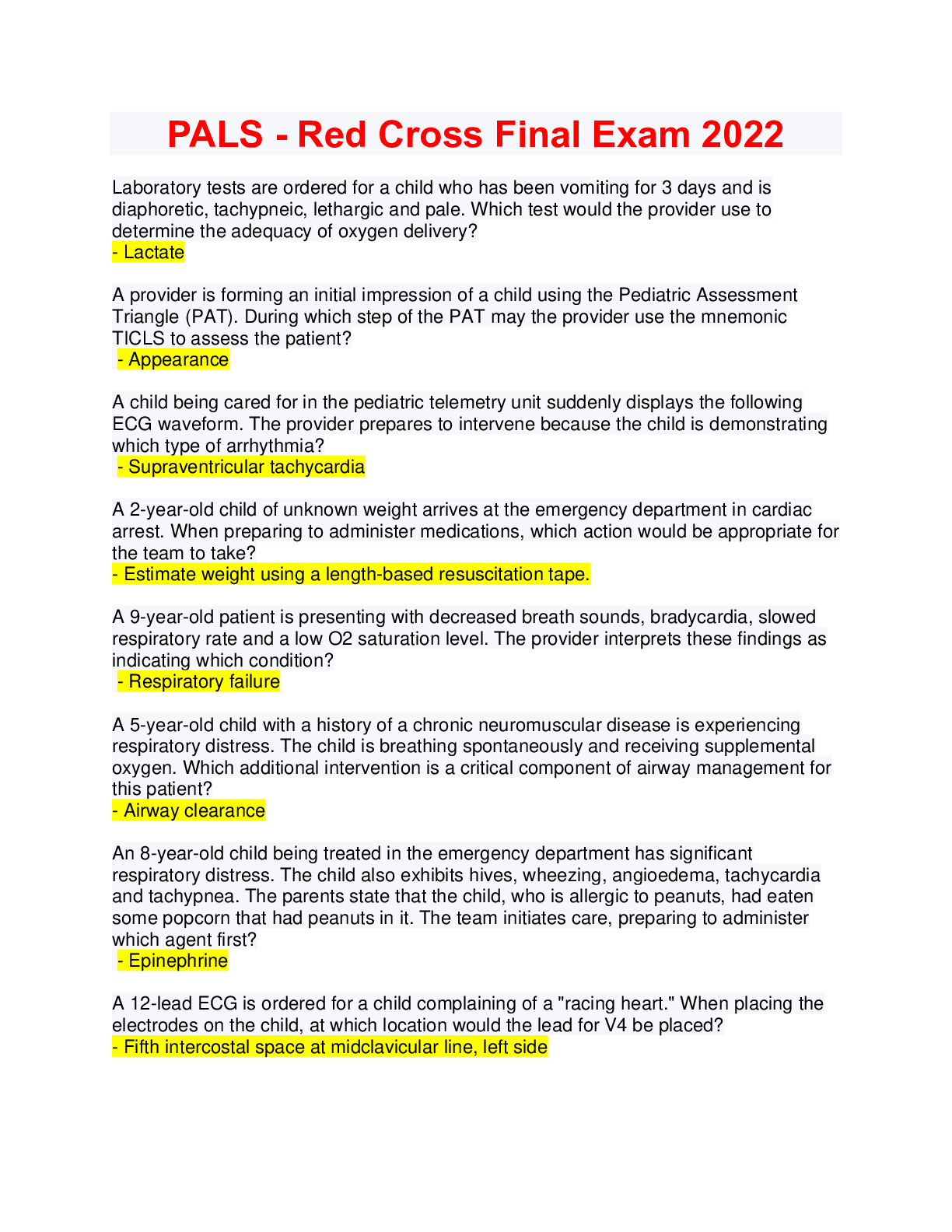
Reviews( 0 )
Document information
Connected school, study & course
About the document
Uploaded On
Apr 05, 2022
Number of pages
6
Written in
Additional information
This document has been written for:
Uploaded
Apr 05, 2022
Downloads
2
Views
119



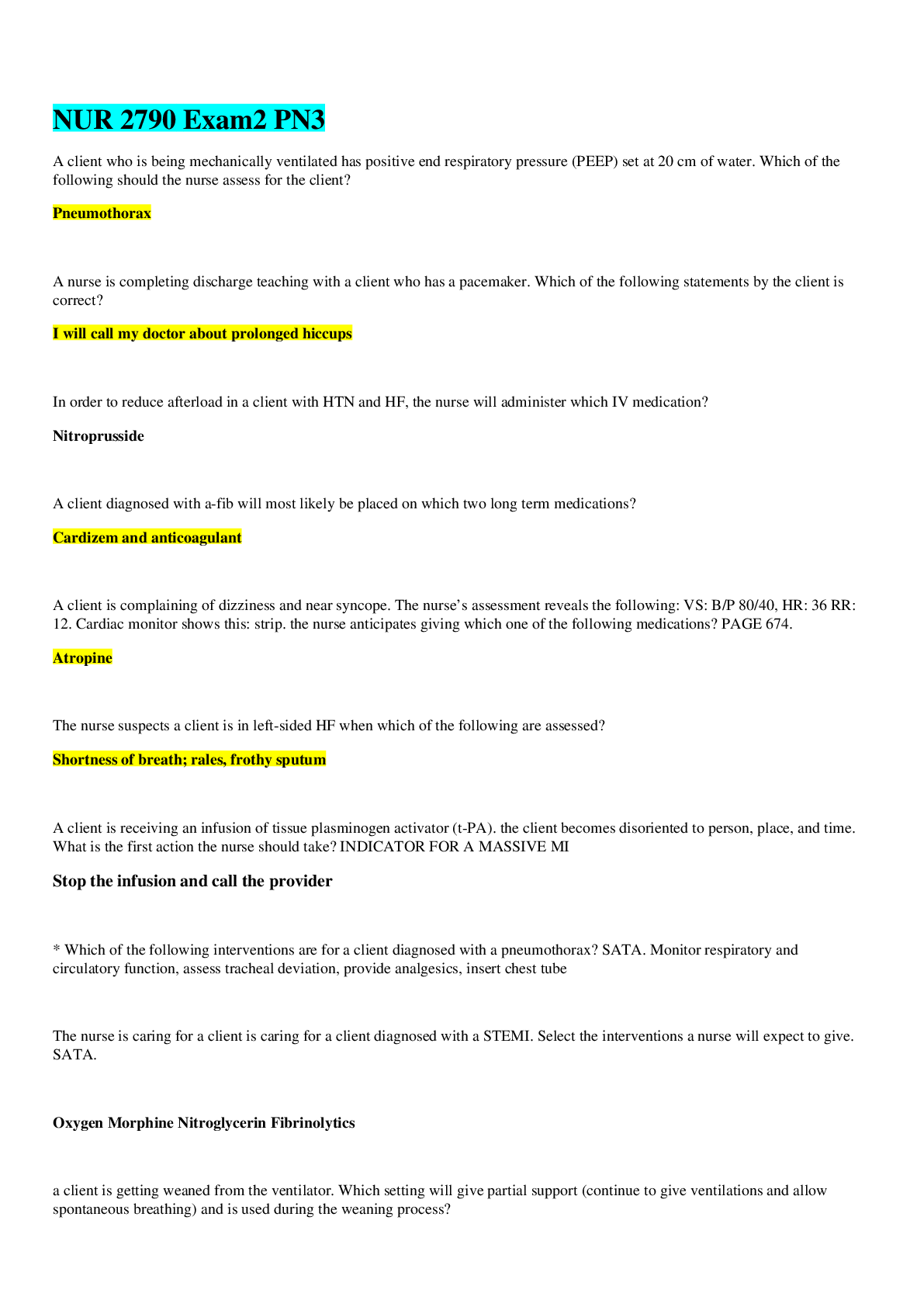

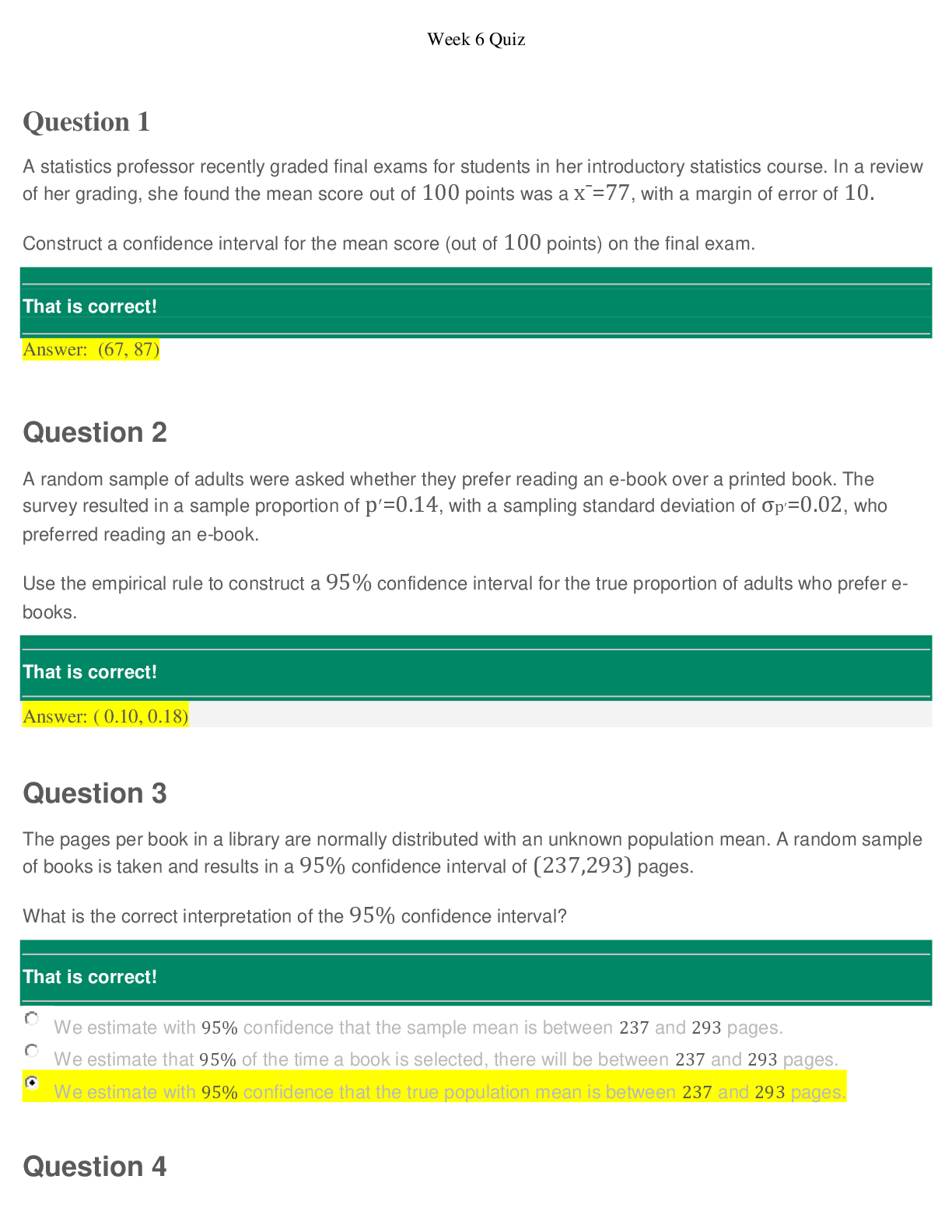



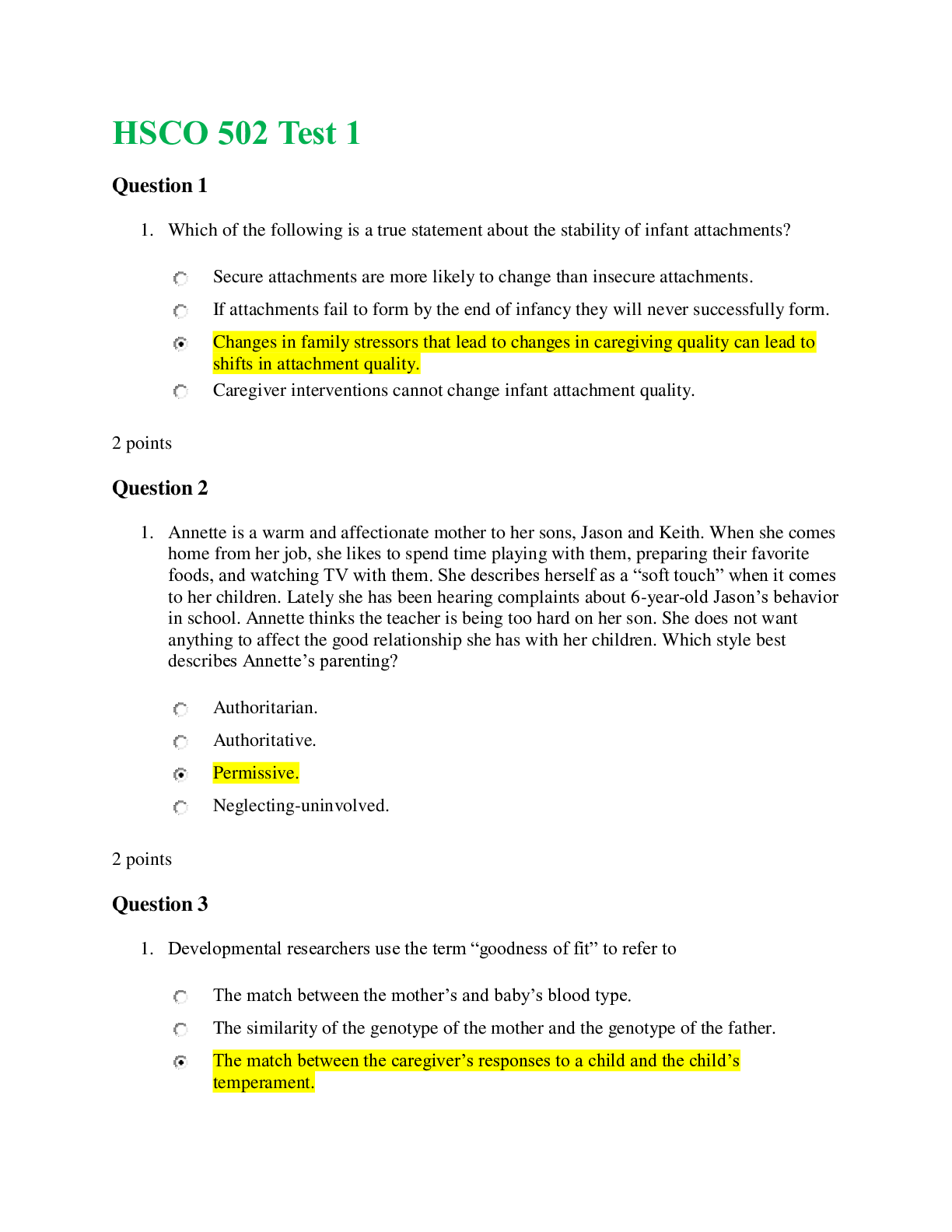

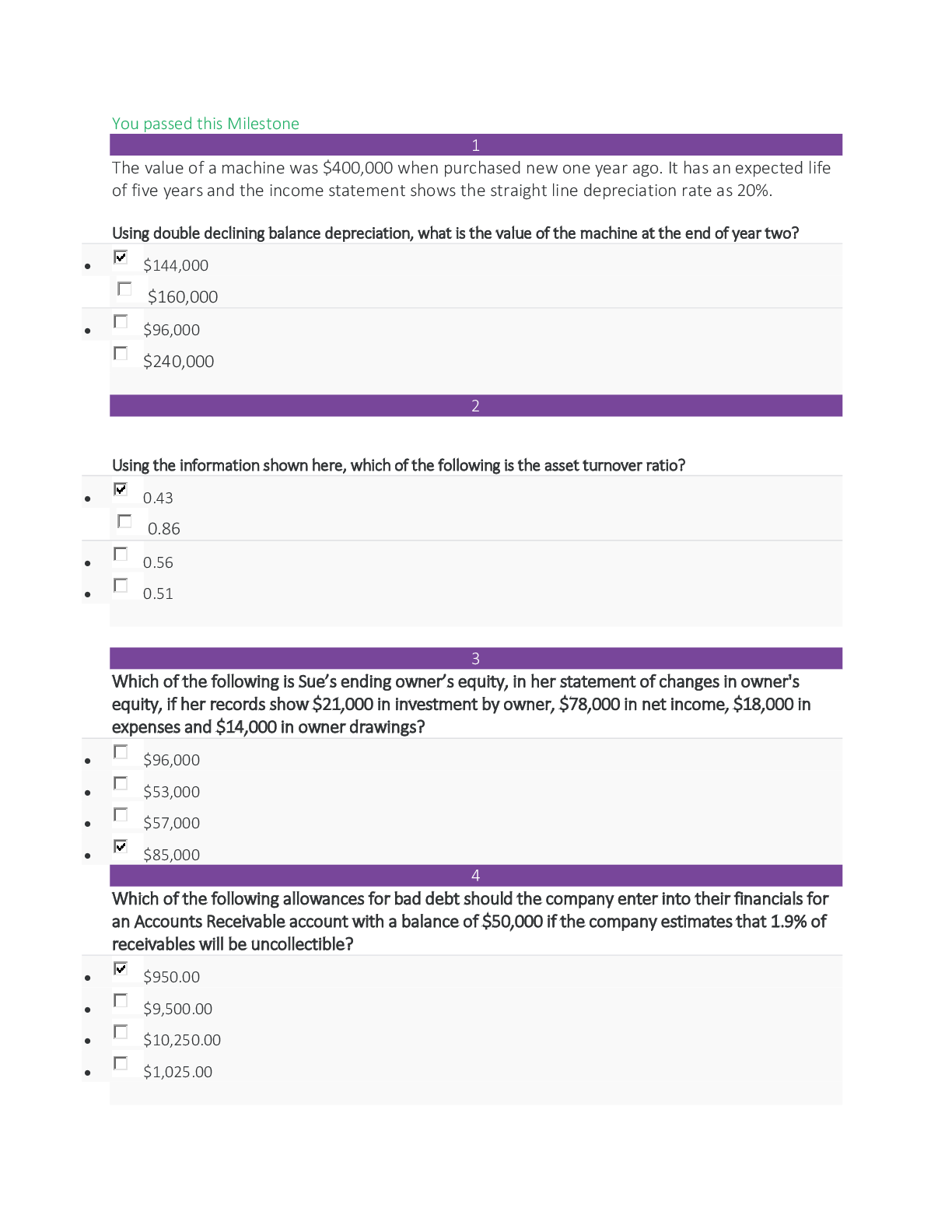
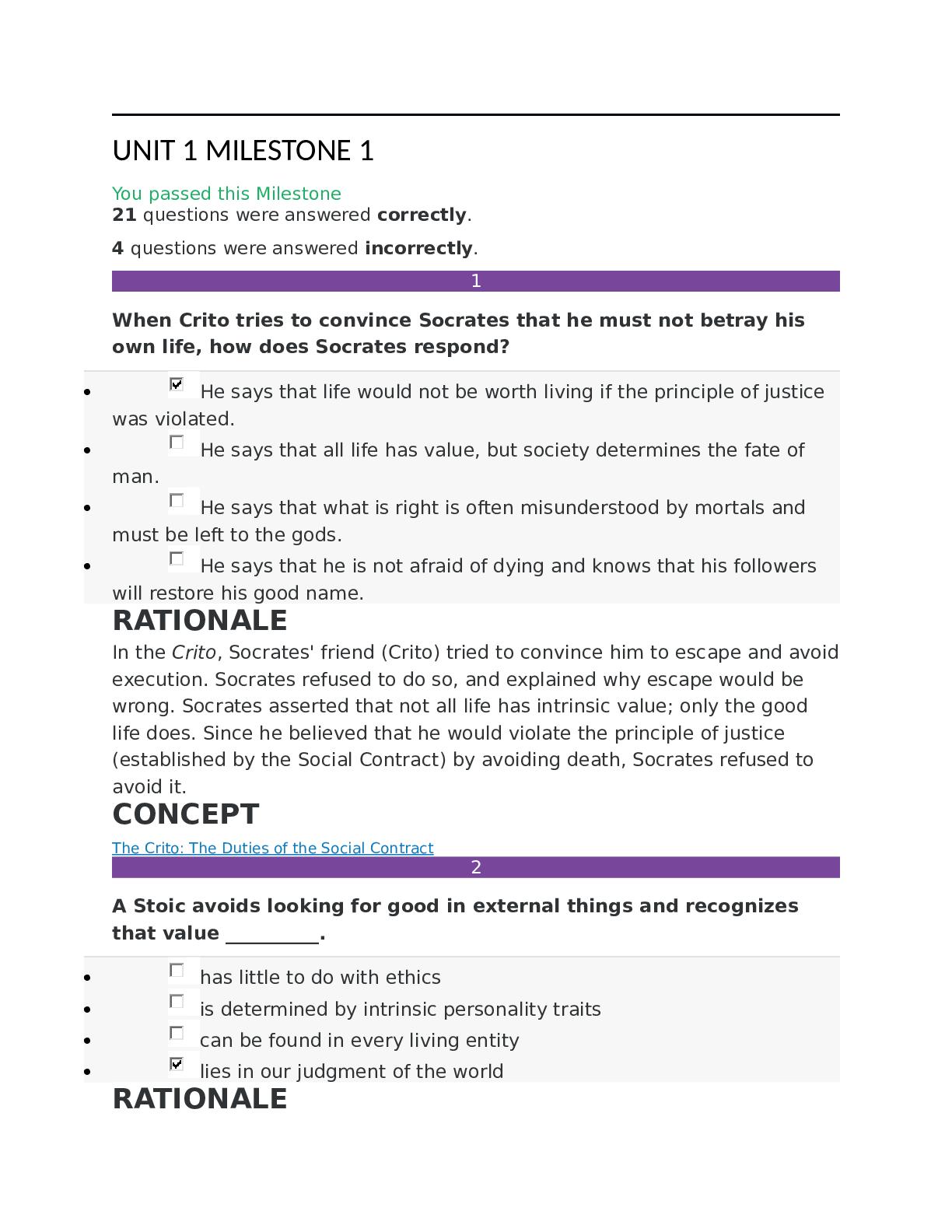
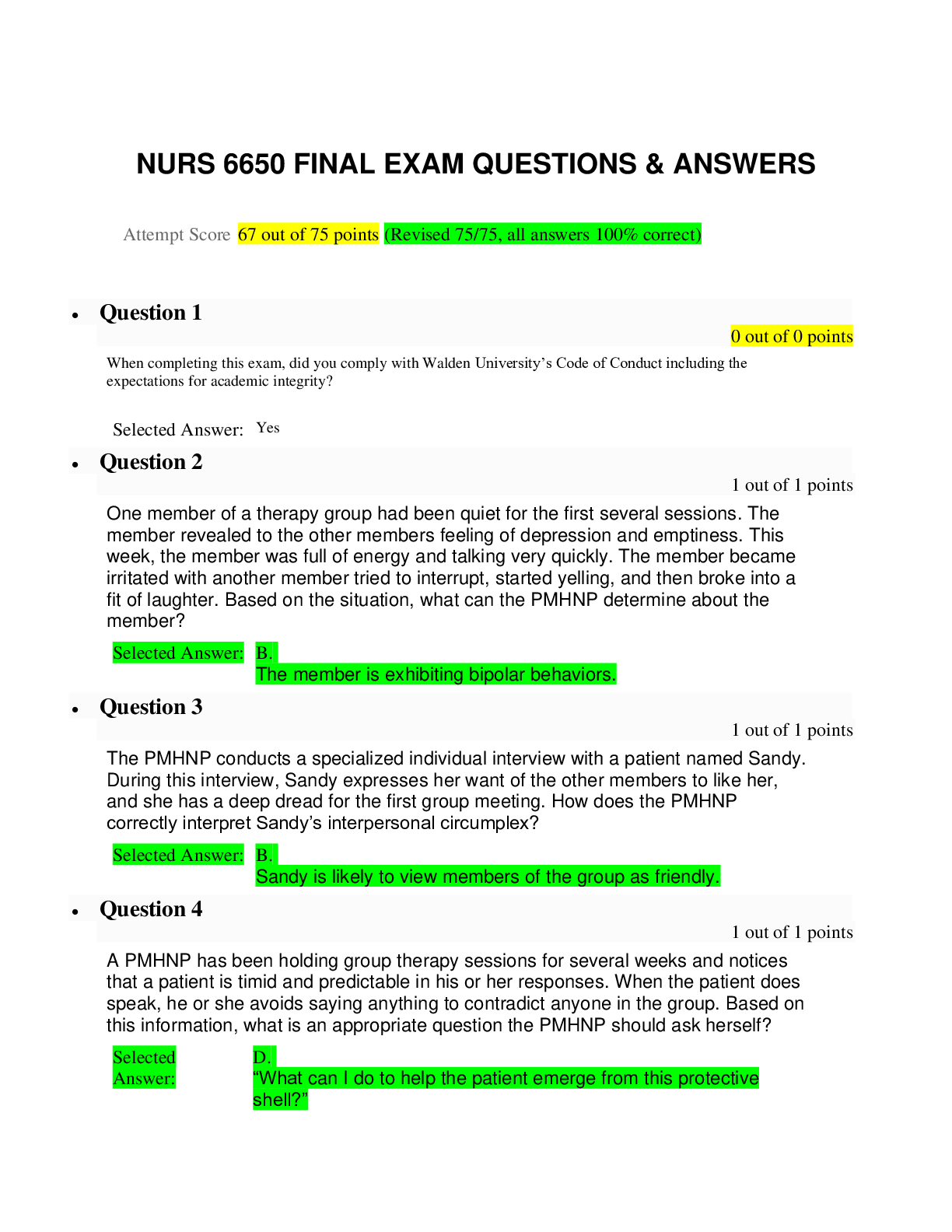
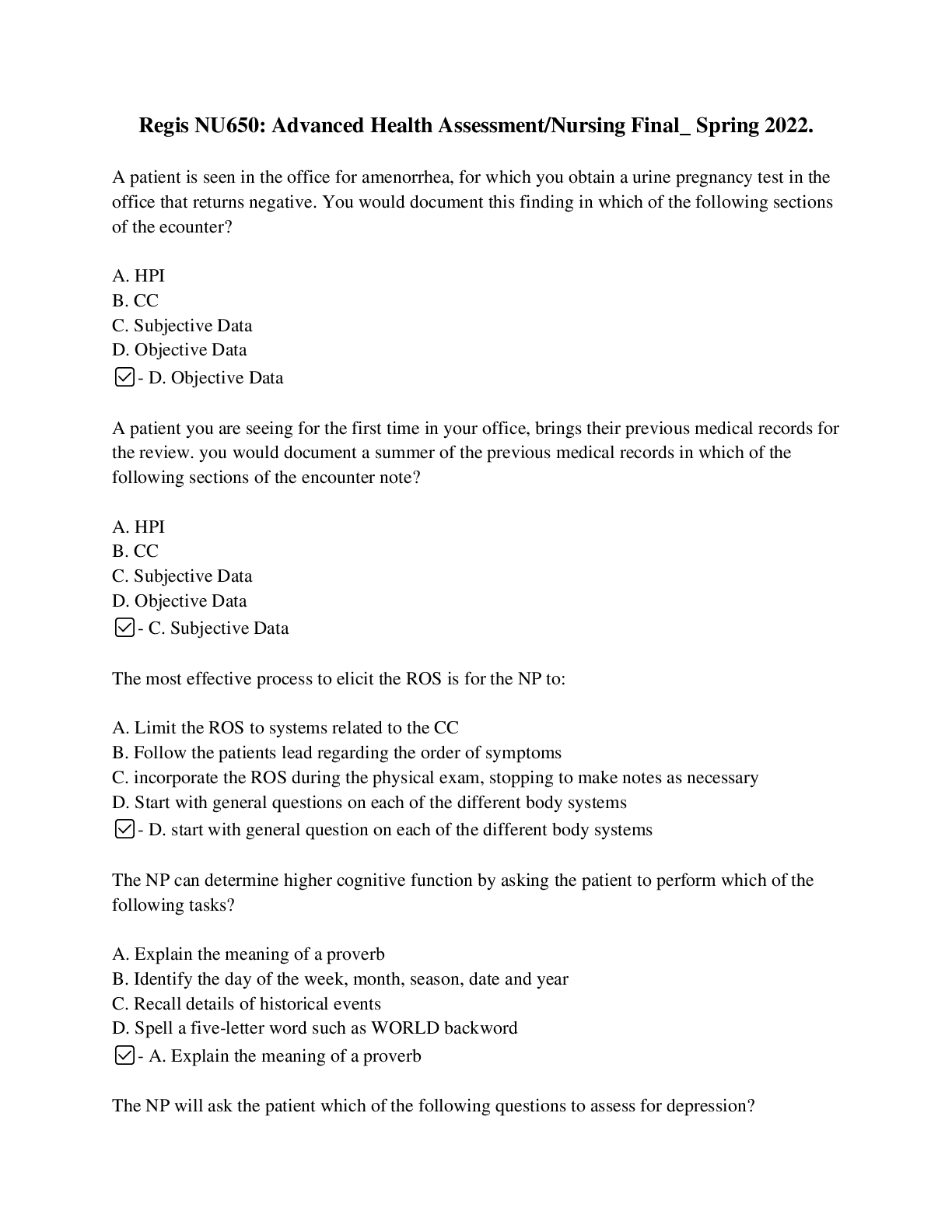
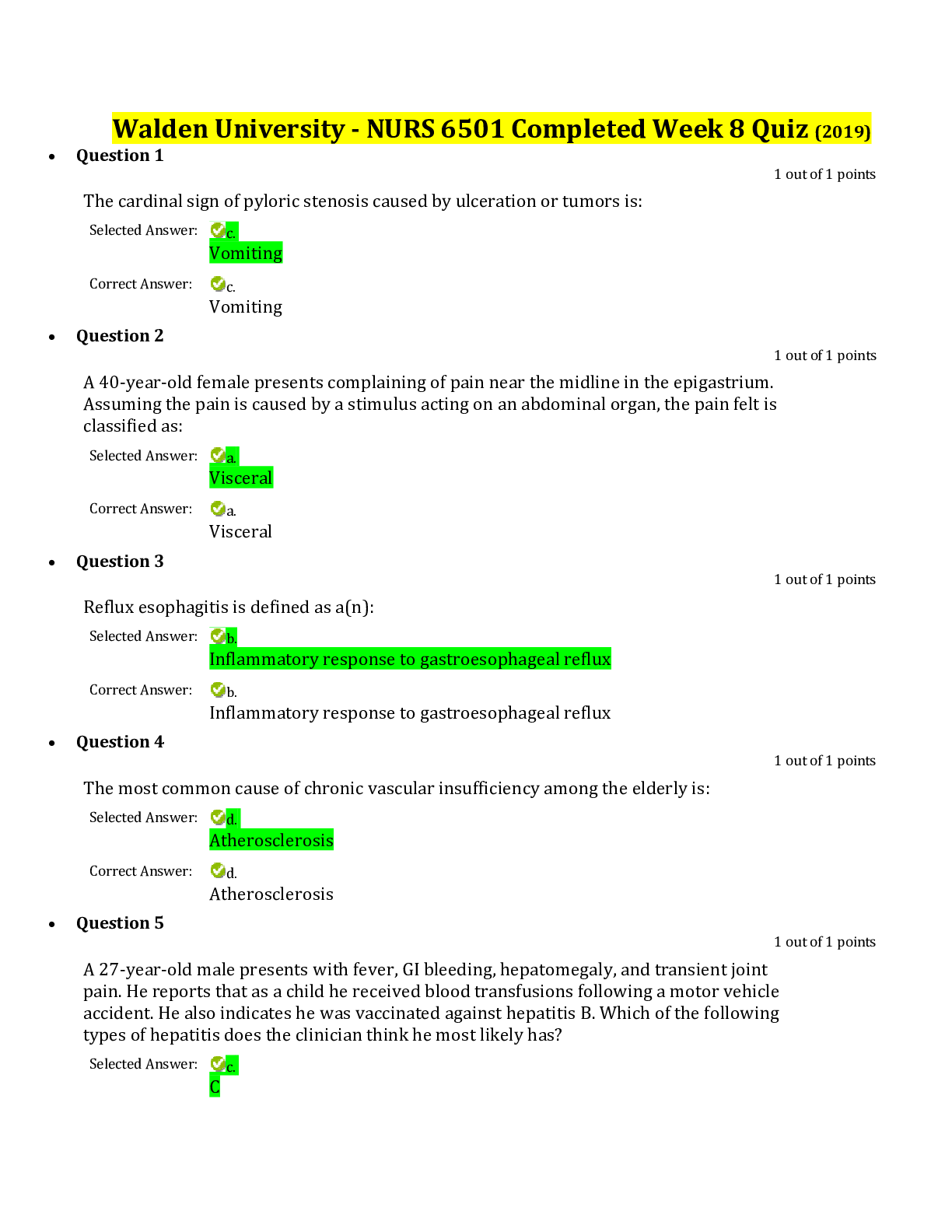
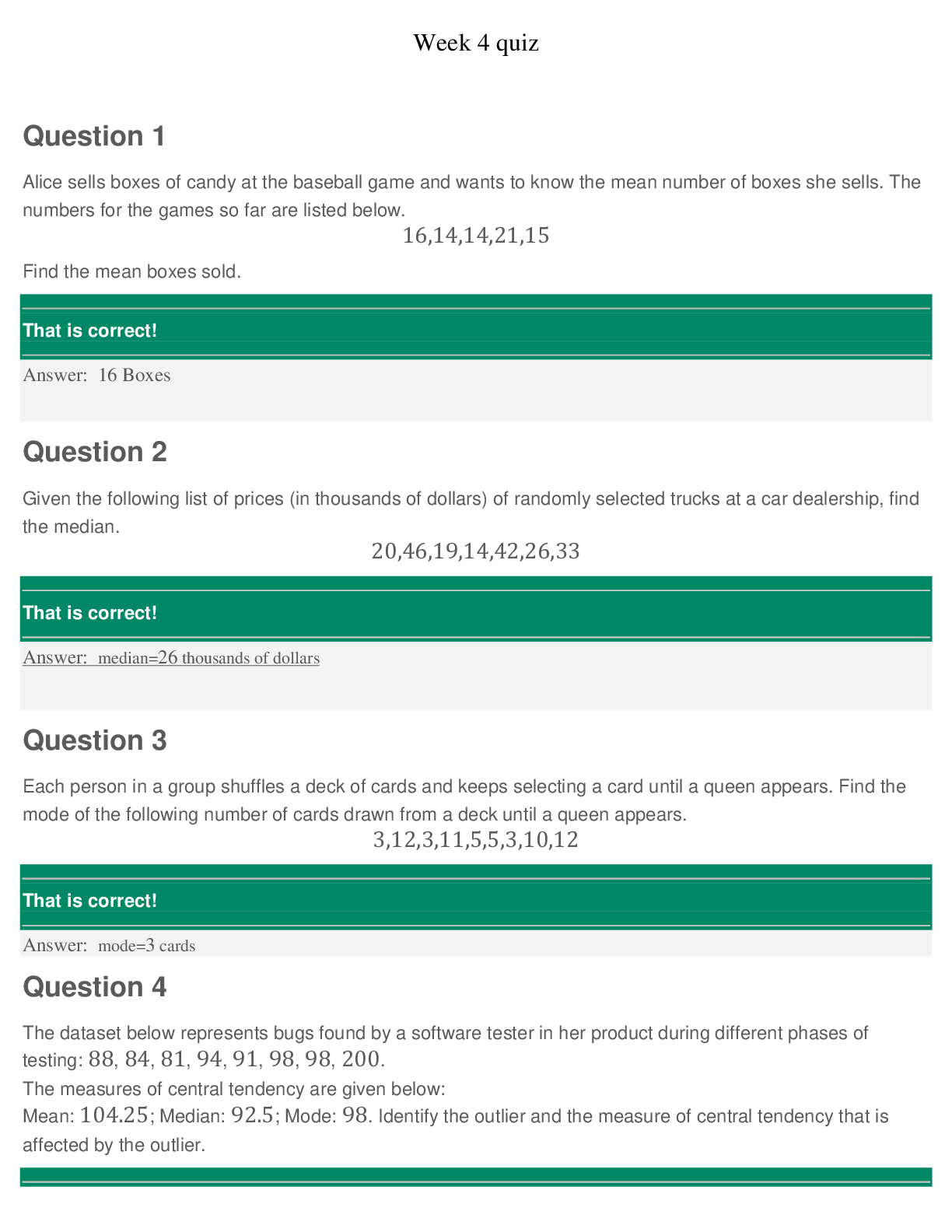
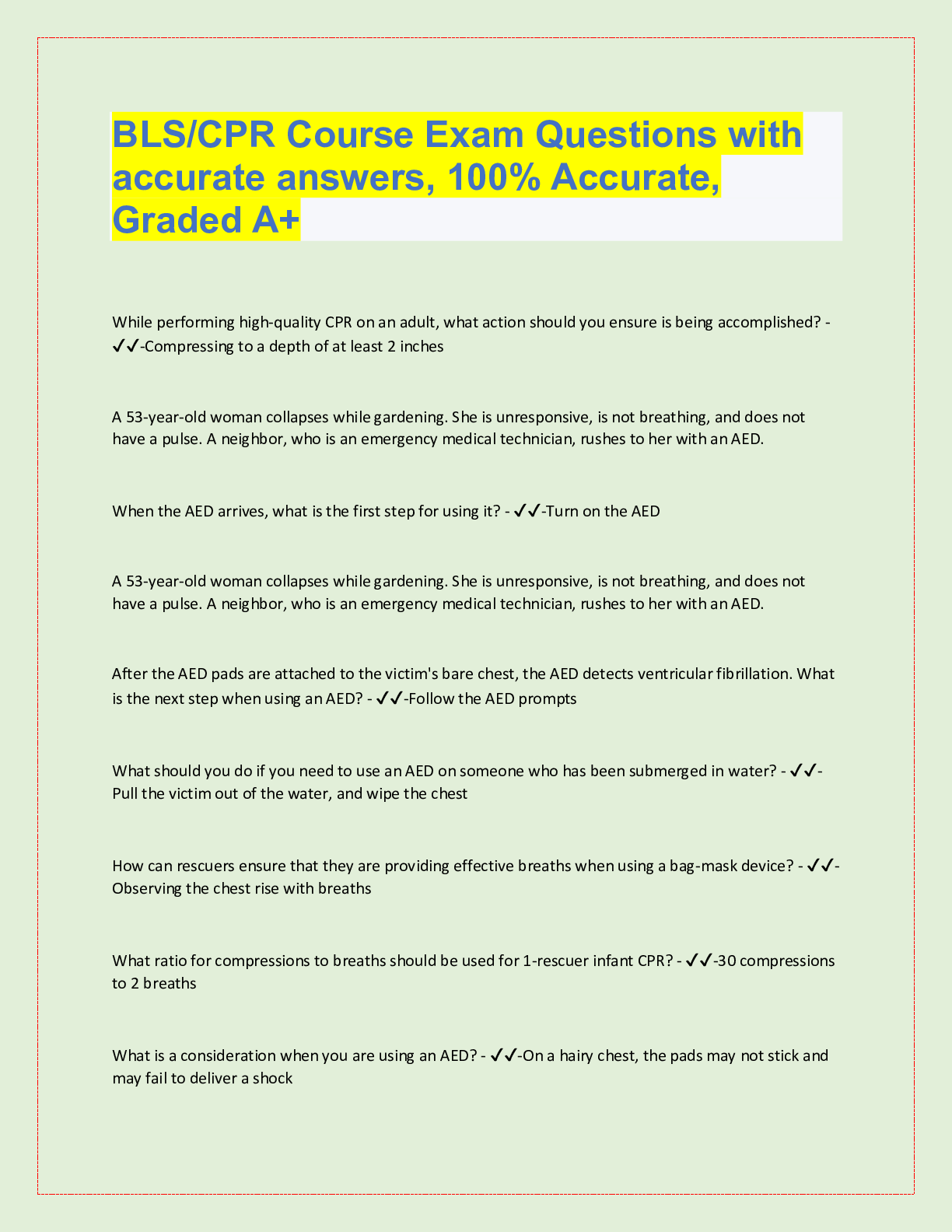


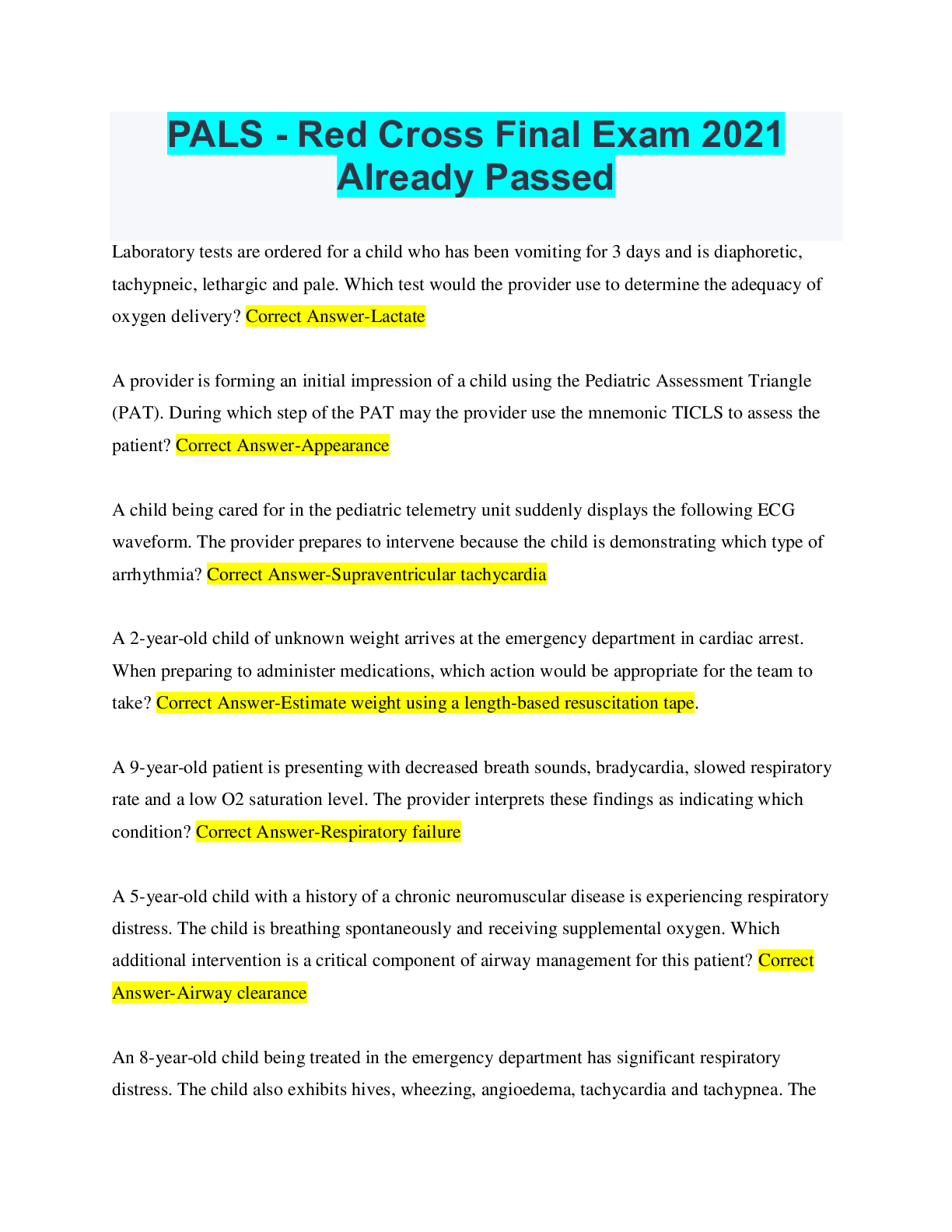

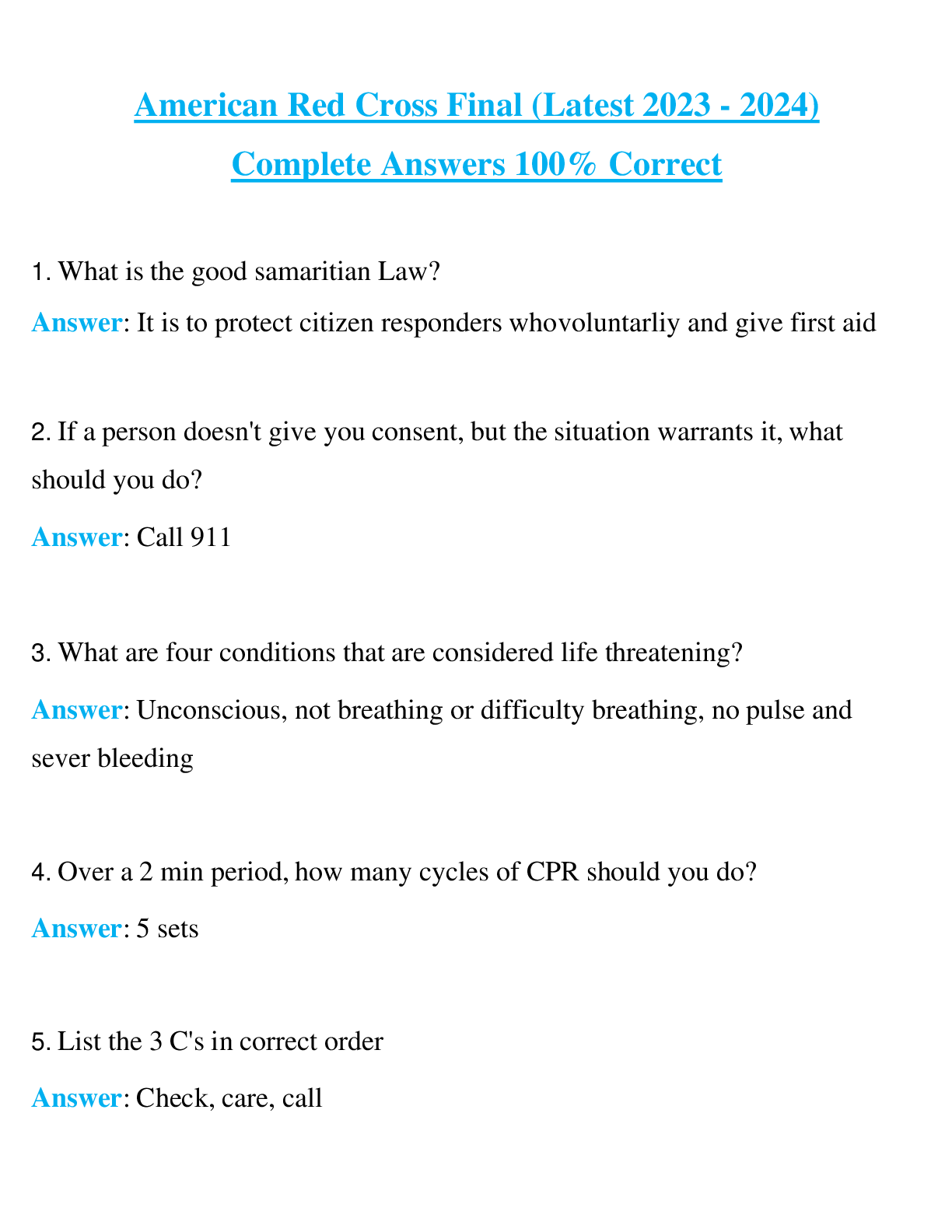
.png)
